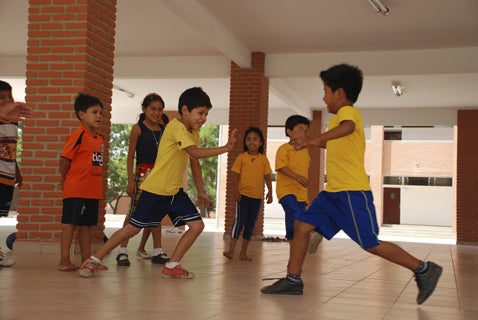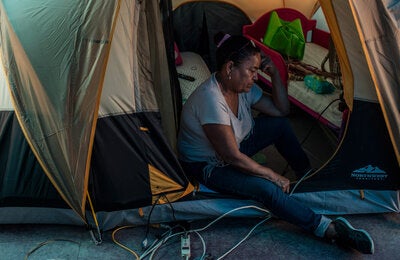

A new study in the Pan American Journal of Public Health, published by the Pan American Health Organization/World Health Organization (PAHO/WHO), finds that efforts to increase activity levels in children during school recess can be effective overall but are least effective in increasing activity among sedentary children.
Washington, D.C., 28 January 2014 (PAHO/WHO) — A new study in the Pan American Journal of Public Health, published by the Pan American Health Organization/World Health Organization (PAHO/WHO), finds that efforts to increase activity levels in children during school recess can be effective overall but are least effective in increasing activity among sedentary children.
The study, "Increasing children's physical activity during school recess periods," by John Chin and David Ludwig, compared children's physical activity levels in 25 public primary schools in New York City, 15 of which were participants in the Recess Enhancement Program (REP), an initiative of Asphalt Green (a nongovernmental organization). REP seeks to increase levels of physical activity in children during school recess using inclusive and age-appropriate games directed by a coordinator. Most of the games, such as "tag," require no special equipment and can be played either on playgrounds or in indoor spaces such as school cafeterias.
{slideshow}223,480,320,n{/slideshow}
In carrying out the study, researchers observed whether children were sedentary, walking or very active during school recess. They found that the proportion of students engaged in vigorous physical activity was 52% higher (41% vs. 27%) in REP schools with a coordinator present than in non-REP schools, and the difference was also significant without a coordinator present (39% vs. 27%).
In contrast, differences in levels of sedentarism across schools were minimal. Whereas 38% of children in non-REP schools were sedentary during recess, the proportion was 36% in REP schools with a coordinator and 37% in REP schools without a coordinator. "It appears that the REP intervention may have been more successful in motivating those who were walkers to become very active and less successful in motivating those who were sedentary," the authors conclude.
The authors see REP as a potentially valuable intervention given that many schools no longer offer physical education and many children engage in little physical activity out of school, resulting in a lack of physical activity that contributes to overweight and associated health problems.
"The REP intervention could be effective in increasing physical activity in children by working with them directly and possibly by changing recess culture so that both children and school staff can participate in and oversee REP games, including when coordinators are not present," the authors write, adding, "This low-cost intervention might be a valuable addition to the tools for combating childhood obesity and worth replicating elsewhere."
Also in this issue of the Pan American Journal of Public Health:
- Priorities for health policy and systems research focused on human resources in health
- Infant mortality from birth defects in Costa Rica, 1981-2010
- A methodological approach for the evaluation of preparedness of pharmaceutical services
- Tuberculosis in Amazonian municipalities of the Brazil-Colombia-Peru-Venezuela border: epidemiological situation and risk factors associated with treatment default
- Socio-demographic, behavioral, and health correlates of nutrition transition dietary indicators in San Juan, Puerto Rico
- External evaluation of population-based cancer registries: the REDEPICAN Guide for Latin America
- Health promotion and primary prevention strategies to fight chronic disease: a systematic review
- Factors that influence a career choice in primary care among medical students from high-, middle-, and low-income countries: a systematic review
- A transdisciplinary model for public health research.
The Pan American Journal of Public Health (PAJPH) is an open-access, peer-reviewed monthly journal of PAHO/WHO. Its mission is to disseminate scientific public health information to strengthen national and local health systems and improve the health of the peoples of the Americas.
Links:
- Increasing children's physical activity during school recess periods
- Current issue of the Pan American Journal of Public Health
- Subscribe to receive e-mail alerts of new issues of the Journal
- http://www.paho.org
- https://www.facebook.com/PAHOWHO
- https://www.youtube.com/pahopin
- https://twitter.com/pahowho #OPSrevista, #PAHOjournal



